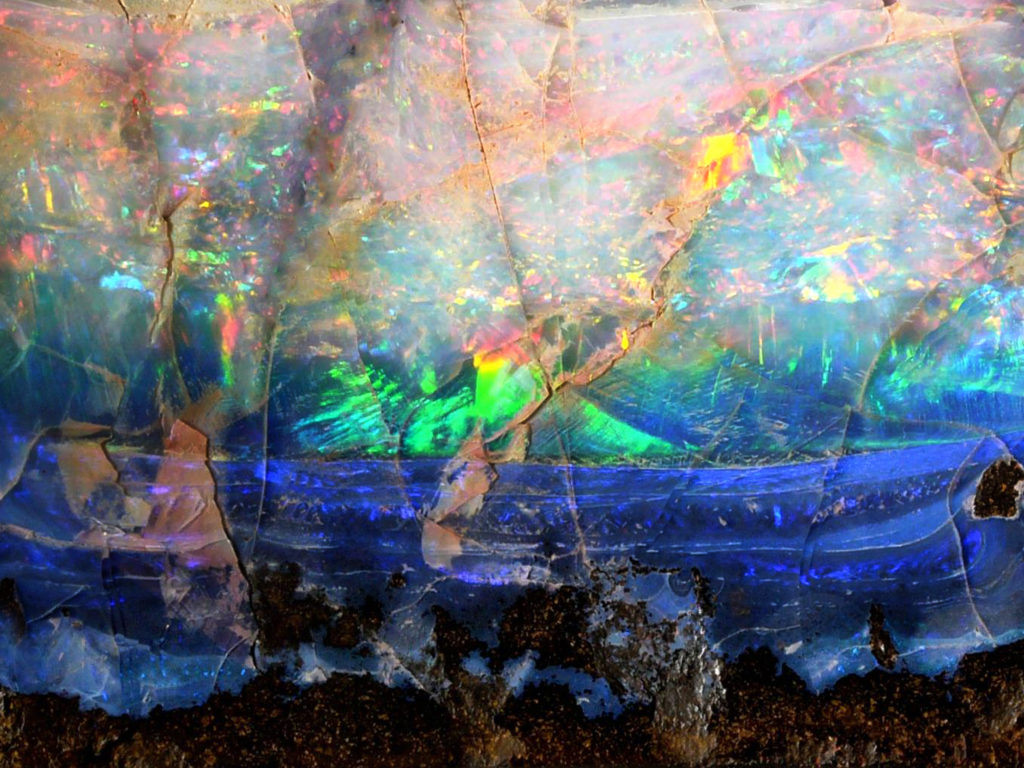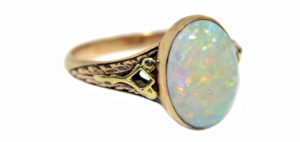The word Opal comes from Greek, meaning change, which describes this gemstone really well. With its great variety of colors, the Opal is a truly exceptional and unique gemstone.

The term opalescent refers to the magical iridescent play of colors of the Opal. Opalescence happens because silica gel globules reflect light again and again, which causes a spectrum of color.
Many myths and legends include this beautiful gemstone. As a talisman, it brought success, wisdom, and hope to the wearer. Cultures in antiquity valued the Opal highly – at times in history, the gem was even more valuable than diamonds.
Species, varieties and colors
The Opal’s beautiful, colorful iridescence is called opalescence. It results from reflection and refraction of light and the hydrated silica gel globules, which form the Opal.

Silica gel is a silica with an irregular atomic pattern and a gel-like to solid consistency. However, the word hydrated describes a crystalline solid which binds water.
This silica gel is colorless or only very slightly colored, causing colorless Opal species. These are called Milk Opal or Glass Opal.
“Impurities” cause opalescence and, depending on the presence of trace elements – iron, copper, silver, cobalt, or nickel – lead to a large variety of Opals. As an example, adding iron may result in a reddish or brownish Opal.
The Boulder Opal is a particularly popular Opal variety native to Queensland, Australia. This variety comes in ground and polished gems that still contain parts of the host rock, such as sandstone or iron rock. They come in a wide range of colors and tones. If the host rock is visible, this is called a Matrix Opal.



